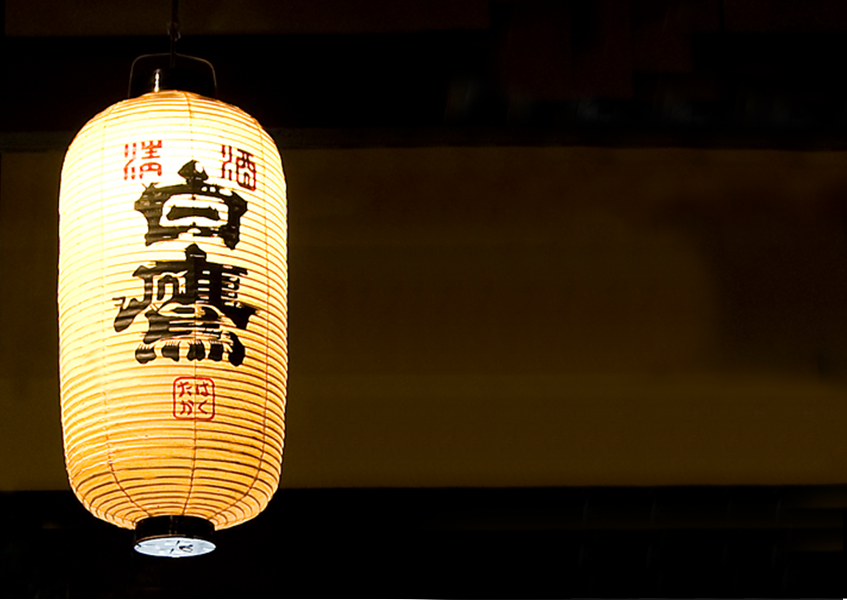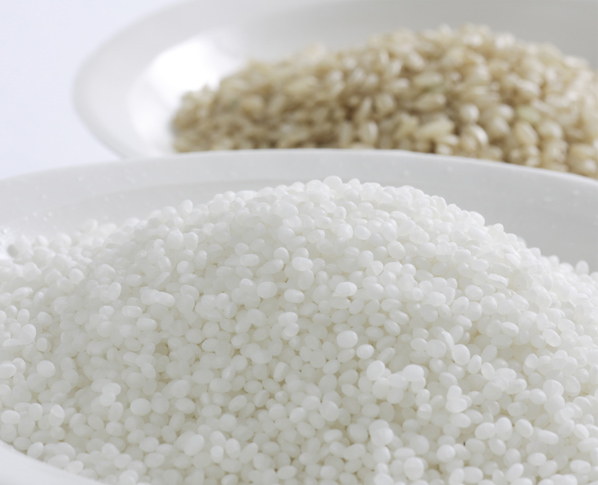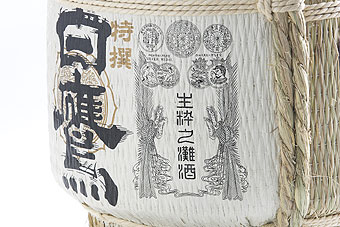Hakutaka's sake
Isejinguu Goryousyu
superior,pure sake
Genuine's "Nadasake"
Quality first
Until the Hakutaka's SAKE
Hakutaka's sake

"Gokujyo Hakutaka"
First-rate SAKE
The Finest Hakutaka
"Gokujo Hakutaka", a junmai daiginjo representing Hakutaka, is a sake that highlights its taste only when it is with cooking.
It is not characterized by trendy ornate aromas and flavors.
The refreshing sharpness enhances the deliciousness of the dish, and it is a sake with a rich and refined taste and a plump aroma that stands up.
The time of meals with your loved ones and the time to drink slowly are richer and more wonderful - Hakutaka sake.
"Gokujo Hakutaka", a junmai daiginjo representing Hakutaka, is a sake that highlights its taste only when it is with cooking.
It is not characterized by trendy ornate aromas and flavors.
The refreshing sharpness enhances the deliciousness of the dish, and it is a sake with a rich and refined taste and a plump aroma that stands up.
The time of meals with your loved ones and the time to drink slowly are richer and more wonderful - Hakutaka sake.

warmed sake
Sake with a wide range of temperatures to drink, from "chilling and drinking" to "drinking until it is warmed".
Each sake has a more delicious temperature, and if you drink it at that temperature, you can feel the original power of that sake.
Sake that is suitable for warm sake and increases the taste by doing warm water is called "sake after warm".
Each sake has a more delicious temperature, and if you drink it at that temperature, you can feel the original power of that sake.
Sake that is suitable for warm sake and increases the taste by doing warm water is called "sake after warm".

Cold sake
Depending on the temperature range, there are stages such as hinata-kan,human body temperature, lukewarm, jyoukan, hot, and splashed warm, but there are also beautiful stages such as snow cold, flower cold,and cool.
Hakutaka makes warm, cold, and more delicious sake.
Hakutaka makes warm, cold, and more delicious sake.

Isejingu Goryousyu
Just as we eat morning and evening, morning and evening meals have been served to the gods of Ise since ancient times. At Ise Jingu, this is called the Higoto Asayu Oomike Festival, and the Mike of the Great God of Ise is offered at the Imperial Palace of The Toyoukedaijingu (Geku).
Oomike is dedicated to the great gods, and there are sea bream, kelp, rice, bonito flakes, vegetables, etc., and sake is contained in the special earthenware (kawarake).
Hakutaka has been selected as the only sake brewery in Japan, and since then it has been offered to the gods of the Shrine without missing a day.
Oomike is dedicated to the great gods, and there are sea bream, kelp, rice, bonito flakes, vegetables, etc., and sake is contained in the special earthenware (kawarake).
Hakutaka has been selected as the only sake brewery in Japan, and since then it has been offered to the gods of the Shrine without missing a day.


Ise Jingu tower of Barrel

"Hakutaka" Monument
A gift from the Ise Jingu after a long-since-years consecration
A gift from the Ise Jingu after a long-since-years consecration
Sake of the mellow beauty
There are three major elements to making sake.
It is water, rice, make. This element determines the taste of sake.
The characteristics of each brewer's sake are due to the difference in this element.
It is water, rice, make. This element determines the taste of sake.
The characteristics of each brewer's sake are due to the difference in this element.
Miyamizu
Since its discovery in the Edo period, Miyamizu, which has been said to be the creator of "Nada no Kiippon", is a downflow water that exists only in a small part located in the southern part of Nishinomiya City, the coastal area of Nishinomiya.
It is hard and has 1.5 times the calcium content.
There are so many phosphorus and potashes necessary for sake brewing, especially phosphorus, which is about 10 times that of sake brewing water in other regions.
These ingredients have the effect of promoting the fermentation of moromi.
Therefore, if you prepare sake with this Miyamizu, you will be able to make a dry male sake with a deep richness.
In order to cherish this richness, which is said to be a characteristic of Nada sake in Hakutaka, sake is brewed with Miyamizu that springs out of eight wells owned by home.
It is hard and has 1.5 times the calcium content.
There are so many phosphorus and potashes necessary for sake brewing, especially phosphorus, which is about 10 times that of sake brewing water in other regions.
These ingredients have the effect of promoting the fermentation of moromi.
Therefore, if you prepare sake with this Miyamizu, you will be able to make a dry male sake with a deep richness.
In order to cherish this richness, which is said to be a characteristic of Nada sake in Hakutaka, sake is brewed with Miyamizu that springs out of eight wells owned by home.

Yamada Nishiki
The sake rice producing area in Hyogo Prefecture has the following characteristics.
(1) Long hours of sunshine in the valley on the north side of the Rokko Mountains
(2) The temperature difference between day and night is large at about 10 degrees.
(3) It is a stepped rice terrace with good water drain
(4) Clayy soil
The sake rice harvested here has large grains and many shinpaku (white part of the center), so it is suitable for sake brewing.
Ichinose and Kusuhara (now Nose and Kusuhara, Yokawa-cho, Miki City, Hyogo Prefecture) in Mino-gun, Hyogo Prefecture are famous as a production area for sake rice since the Edo period and as the production area of Japan's no. 1 sake rice "Yamada Nishiki".
Hakutaka has been contracted with farmers in the area for more than 100 years, and has been preparing japan's best sake rice.
(1) Long hours of sunshine in the valley on the north side of the Rokko Mountains
(2) The temperature difference between day and night is large at about 10 degrees.
(3) It is a stepped rice terrace with good water drain
(4) Clayy soil
The sake rice harvested here has large grains and many shinpaku (white part of the center), so it is suitable for sake brewing.
Ichinose and Kusuhara (now Nose and Kusuhara, Yokawa-cho, Miki City, Hyogo Prefecture) in Mino-gun, Hyogo Prefecture are famous as a production area for sake rice since the Edo period and as the production area of Japan's no. 1 sake rice "Yamada Nishiki".
Hakutaka has been contracted with farmers in the area for more than 100 years, and has been preparing japan's best sake rice.

Yamada Nishiki and Hakutaka
The first-class Etsuzo had long selected high-quality sake rice, but in 1893, Mr. Atshiro Yamada of Nose, Okuyokawa-mura, Bisac County, focused on the painstaminatingly producing improved rice suitable for sake brewing, and supported the improvement of the quality of sake rice by granting a bounty, and adopted this rice. In addition, this later developed into a village rice system (contract cultivation) and created "Yamada Nishiki".
SAKE making
Sake is made up of yeast, a microorganism.
This yeast is cultured purely in large quantities and is called shubo.
Shubo-zukuri has long been considered the basis of sake brewing because the quality of sake has a deep relationship with the quality of sake mothers.
In order to lead the moromi to sound fermentation, it is necessary to cultivate a large amount of energetic excellent yeast in the shubo.
Lactic acid plays an important role in preventing contamination of various bacteria in the process of nurturing and brewing this shubo, and to grow only excellent yeast.
"Living" is a traditional technique from ancient times, and cultivates shubo by skillfully using natural lactic acid bacteria and microorganisms.
A living (kimototo) shubo that can produce strong and strong yeast with good vigor compared to the rapid brewing method of adding lactic acid at the beginning requires advanced technology and days.
In order to continue to preserve the unique taste of Hakutaka, Hakutaka continues to make life that requires the skills cultivated by the most time, time, and traditional techniques among the living (kimoto) shubo.
This yeast is cultured purely in large quantities and is called shubo.
Shubo-zukuri has long been considered the basis of sake brewing because the quality of sake has a deep relationship with the quality of sake mothers.
In order to lead the moromi to sound fermentation, it is necessary to cultivate a large amount of energetic excellent yeast in the shubo.
Lactic acid plays an important role in preventing contamination of various bacteria in the process of nurturing and brewing this shubo, and to grow only excellent yeast.
"Living" is a traditional technique from ancient times, and cultivates shubo by skillfully using natural lactic acid bacteria and microorganisms.
A living (kimototo) shubo that can produce strong and strong yeast with good vigor compared to the rapid brewing method of adding lactic acid at the beginning requires advanced technology and days.
In order to continue to preserve the unique taste of Hakutaka, Hakutaka continues to make life that requires the skills cultivated by the most time, time, and traditional techniques among the living (kimoto) shubo.

Genuine Nada Sake
Nada has been called the home of sake not only because of its climate and climate, but also because of its excellent miyamizu, large-grained sake rice, and excellent technology for sake brewing.
Hakutaka, who continues to make genuine Nada sake, labels only sake made by himself in his own brewery.
We do not blend and bottle sake produced by other manufacturers.
We would like to deliver only genuine sake and "genuine Nada sake" that are truly confident with 100% home brew to everyone.
Hakutaka, who continues to make genuine Nada sake, labels only sake made by himself in his own brewery.
We do not blend and bottle sake produced by other manufacturers.
We would like to deliver only genuine sake and "genuine Nada sake" that are truly confident with 100% home brew to everyone.

Quality first
Hakutaka does not pursue the production quantity mischievously, and performs one-season brewing (cold making) using the traditional technique of the brewers, which is a tradition of Nada sake, and solidly produces a quantity that is well-quality control.
In addition, in order to make everyone drink even a little delicious sake, we will make efforts in parts that are not visible to customers, such as cooling the product instantly immediately after bottling.
In the brewery of Hakutaka, when barrel-stuffed sake was the mainstream, we never used water to wash barrels before filling sake, and washed them with sake. This work was called "taru furi", and when the remaining sake was low, the quality of sake was avoided, and the quality was carried out knowing that the quality would not change until the last drop.
We believe that quality comes first in our tessy construction and above all, and the challenges that can continue continue are still alive in Hakutaka.
In addition, in order to make everyone drink even a little delicious sake, we will make efforts in parts that are not visible to customers, such as cooling the product instantly immediately after bottling.
In the brewery of Hakutaka, when barrel-stuffed sake was the mainstream, we never used water to wash barrels before filling sake, and washed them with sake. This work was called "taru furi", and when the remaining sake was low, the quality of sake was avoided, and the quality was carried out knowing that the quality would not change until the last drop.
We believe that quality comes first in our tessy construction and above all, and the challenges that can continue continue are still alive in Hakutaka.




Until Sake Hakutaka Is Made

(1) Brown rice
Brown rice arrives from contract farmers.
(2) Polishing rice
Brown rice is put on a rice milling machine and polished. The rice polishing ratio (how much rice is shaved) varies depending on the sake.
(3) Washing/soaking
The polished rice is washed and water is included in the rice until it is optimal for the next step (steamed rice). Sometimes the dipping time is timed with a stopwatch.
(4) Steamed rice
Steam the rice.
The adjustment of the steaming condition is subtle.
(5) Making koji
Aspergillus mold is planted in steamed rice. We concentrate on temperature control so that koji mold grows.
(6) Sake mother (Moto) making
We make shubo by putting koji, rice, and water. This process is important for raw materials. This process is called pickpocketing. The toji's arm shines.
(7) Main preparation
I put a moto and prepare it. It is a babysing tower for about 2-3 weeks until the brittle is completed.
(8) Squeeze
Squeeze the finished grated. A transparent sake containing carbon dioxide that condenses the umami of rice comes out.
(9) Storage
For sterilization, the squeezed sake is heated (heated), stored in a tank, and laid down slowly. In the early autumn, you can make sake with depth.
(10) Bottling
Pack the sake you put to bed in a bottle. Put each face on a bottle.
(11) Finished
We will reach you. Who knows! A fun time, cheers! !
Brown rice arrives from contract farmers.
(2) Polishing rice
Brown rice is put on a rice milling machine and polished. The rice polishing ratio (how much rice is shaved) varies depending on the sake.
(3) Washing/soaking
The polished rice is washed and water is included in the rice until it is optimal for the next step (steamed rice). Sometimes the dipping time is timed with a stopwatch.
(4) Steamed rice
Steam the rice.
The adjustment of the steaming condition is subtle.
(5) Making koji
Aspergillus mold is planted in steamed rice. We concentrate on temperature control so that koji mold grows.
(6) Sake mother (Moto) making
We make shubo by putting koji, rice, and water. This process is important for raw materials. This process is called pickpocketing. The toji's arm shines.
(7) Main preparation
I put a moto and prepare it. It is a babysing tower for about 2-3 weeks until the brittle is completed.
(8) Squeeze
Squeeze the finished grated. A transparent sake containing carbon dioxide that condenses the umami of rice comes out.
(9) Storage
For sterilization, the squeezed sake is heated (heated), stored in a tank, and laid down slowly. In the early autumn, you can make sake with depth.
(10) Bottling
Pack the sake you put to bed in a bottle. Put each face on a bottle.
(11) Finished
We will reach you. Who knows! A fun time, cheers! !



